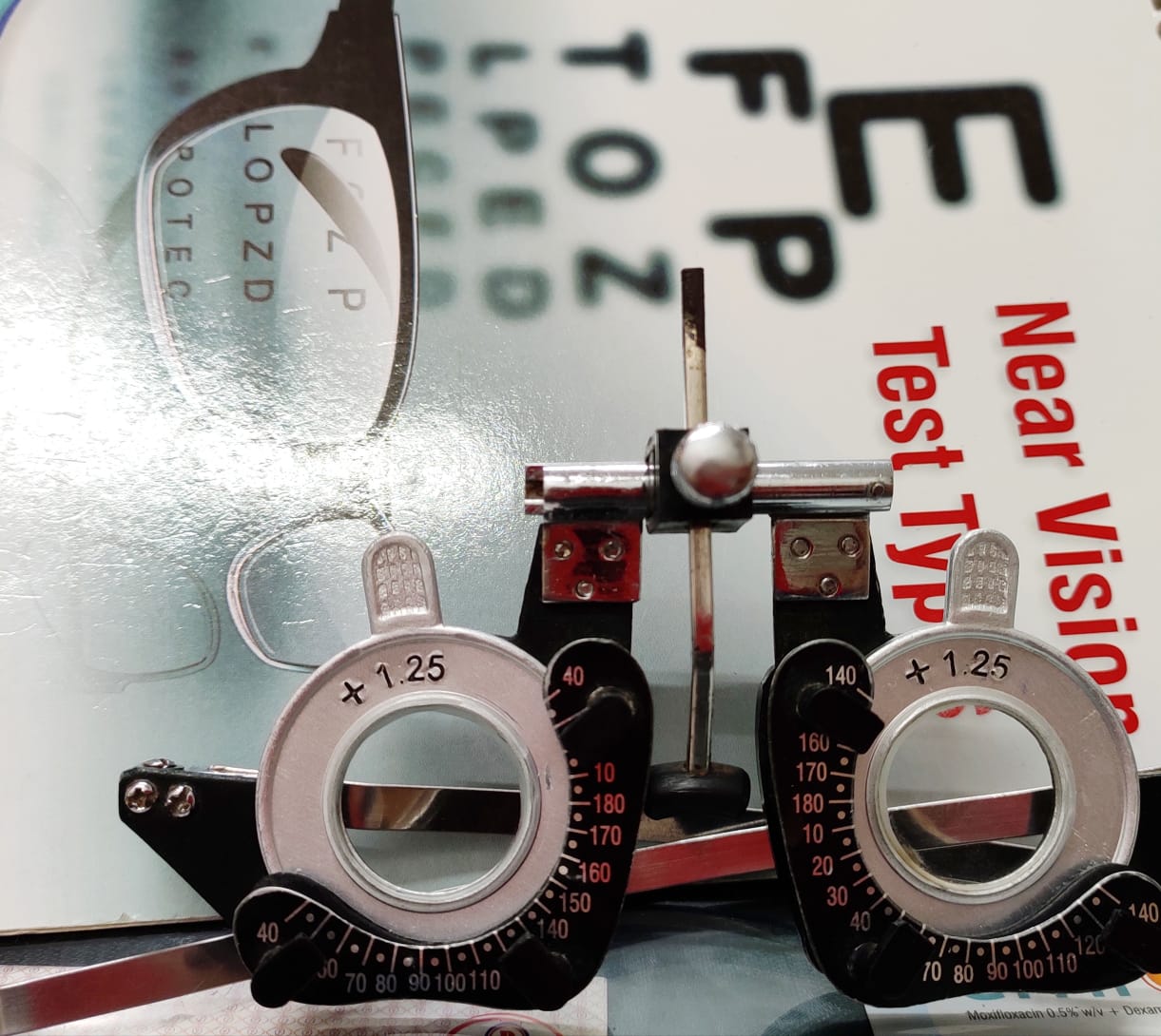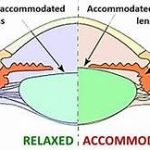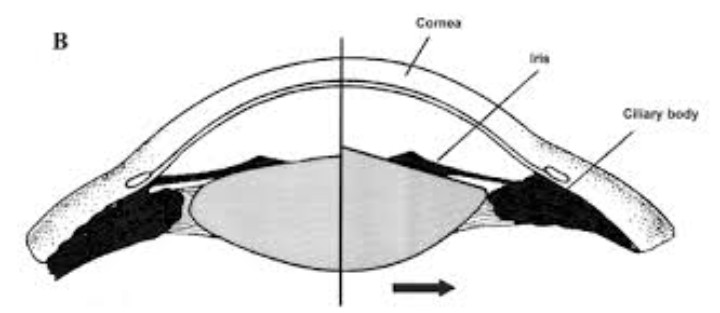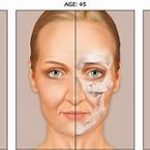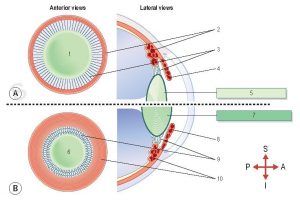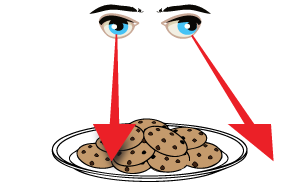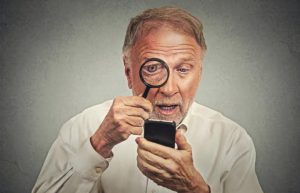As we know that in an emmetropic eye, parallel rays of light coming from infinity are brought to focus on the retina, with Accommodation at rest. Our eyes have been provided with a Unique mechanism by which we can ever focus the diverging rays coming from a near object on the retina in a bid to see clearly. This mechanism is called Accommodation. In it, there occurs increase in the power of the crystalline lens due to change in shape of the lens resulting from a contraction of ciliary muscle.
Anomalies of Accommodation (variations in either direction, above or below that range) are by no means uncommon and include the following:
1) Diminished or deficient Accommodation:
A) Physiological (presbyopia)
B) Pharmacological (cycloplegia)
C) Pathological
I) Insufficiency of Accommodation
II) I11-Sustained Accommodation
III) Inertia of Accommodation
IV) Paralysis of Accommodation
2) Increased Accommodation:
A) Excessive Accommodation
B) Spasm of Accommodation
1) Diminished Accommodation:
- Presbyopia: Presbyopia is not an error of refraction but a condition of Physiological insufficiency of Accommodation due to reduced amplitude, leading to a progressive fall in near vision.
Pathophysiology and causes: To understand the pathophysiology of presbyopia, a knowledge about Accommodation is essential. We know, In emmetropic eye, far point is infinity and near point varies with age (7cm at the age of 10years,25cm at the age of 40 years and 33cm at the age of 45 years). We generally keep the book at about 25cm, so we can read comfortably up to the age of 40years.After 40 years, the NPA recedes beyond the normal reading or working range.
• Causes of presbyopia: Decrease in the Accommodative power of crystalline lens with increasing age, leading to presbyopia, occurs due to the following:
• Age related changes in the lens which include:
1) Decrease in the elasticity of the lens capsule.
2) Progressive increase in size and hardness of the lens substance.
• Age related decline in ciliary muscle power may also contribute in causation of presbyopia.
• Causes of premature presbyopia include:
1)Uncorrected Hypermetropia
2)Chronic simple Glaucoma
3) Premature sclerosis of crystalline lens
4)Weakness of ciliary muscle
I) Insufficiency of Accommodation: Insufficiency of Accommodation is when the Accommodative power is significantly and persistently below the normal Physiological limits for the patient’s age.
Causes:
1) Premature sclerosis of crystalline lens
2) Weakness of ciliary muscle due to systemic causes of muscle fatigue such as debilitating illness, anaemia, toxaemia, malnutrition, diabetes mellitus, pregnancy, mental stress, whooping cough, measles, nasal obstruction and hypopituitarism
3) Weakness of ciliary muscle due to local cause, Primary open angle glaucoma and mild cyclitis as during onset of sympathetic ophthalmia.
Insufficiency of accommodation is not very common before 15 and after 45 years of age. It may be intermittent or constant and transient or persistent. Patient commonly complain of the following:
a) Headache, fatigue and irritability of the eye while attempting near work.
b) Near work is blurred and becomes difficult.
c) Intermittent diploma due to associated disturbances of convergence is also reported. Often accommodative failure is associated with convergence insufficiency, but sometimes the attempt to accommodate brings excessive amount of convergence.
II) ILL-Sustained Accommodation: It is a condition of accommodation fatigue, in which situation although the range of accommodation is normal, it can’t be sustained for a sufficient time period. This causes a tendency for the patient’s NPA to recede during the close work.
Since it is an initial stage of true insufficiency, the symptoms are largely the same. Patients complain that while doing near work they start feeling tired very soon, their near point generally recedes and the near vision becomes blurred.
III) Accommodation inertia: It is a condition in which there is difficulty in adjusting the accommodation according to the distance of the object of regard so as to gain clear vision.
It is comparatively rare condition. The patient usually complains that it takes some time and involves some definite effort for him or her to focus a near object after looking at the distance.
IV) Paralysis of Accommodation: Paralysis of Accommodation also known as cycloplegia, it refers to complete absence of Accommodation.
Causes:
• Drug-induced cycloplegia due to the effect of atropine, homatropine or other parasympatholytic drugs.
• Internal ophthalmoplegia (paralysis of ciliary muscle and sphincter pupillae) may result from neuritis associated with diphtheria, Syphilis, diabetes, chronic alcoholism, cerebral or meningeal diseases, including even a mild head injury.
• Paralysis of Accommodation as a component of complete third nerve paralysis may occur due to intracranial or orbital causes, may be traumatic, inflammatory, vascular, demyelination and neoplastic in nature.
Clinical features:
a) Blurring of vision
b) Photophobia
c) Micropsia
d) Abnormal receding of near point
e) Other signs of third nerve palsy
2. Increased Accommodation:
A) Excessive Accommodation: It is used to describe a situation in which an individual exerts more than the normal required Accommodation for performing a certain near work. It is within the voluntary control of the individual and is an intermittent process, the spasm of Accommodation is continuous prolonged use of excessive Accommodation.
Causes:
1) Young hypermetropes
2) Young myopes
3) Astigmatic error in young persons may also be occasionally associated with use of excessive Accommodation.
4) presbyopes in the beginning use excessive accommodation to accomplish near work.
5)Use of improper or ill-fitting Spectacles may also cause use of excessive Accommodation.
- Spasm of Accommodation: It refers to continuous exertion of abnormally excessive accommodation, which is out of the voluntary control of the individual.
Causes:
a) Drug-induced spasm of Accommodation is known to occur after use of strong miotics such as echothiophate.
b) Spontaneous spasm of Accommodation is occasionally found in children who attempt to compensate for a refractive anomaly that impairs their Vision (generally uncorrected Hypermetropia but also astigmatic error and sometimes even Myopia).
c) Iridocyclitis may also associated with ciliary spasm
d)Spasm of near reflex is a clinical syndrome, often seen in tense or disturbed individuals who present with excessive Accommodation, excessive convergence and miosis.
• Varying Blurred vision due to induced Pseudomyopia.
• Asthenopic symptoms are more marked than the visual symptoms.
• Headache
• Near point is abnormally close.
• Macropsia may occur due to optical illusion.
